Novel High Isolation and High Capacitance Ratio RF MEMS Switch: Design, Analysis and Performance Verification
Abstract
:1. Introduction
2. Materials and Methods
2.1. Circuit Topology and Theory Analysis
2.2. Spring Constant and Actuation Voltage Analysis
2.3. Design of the High Capacitance Ratio RF MEMS Switch and Simulation
3. Fabrication, Measurements and Discussions
3.1. Fabrication
- The whole structure of the proposed high-isolation RF MEMS switch was fabricated on a high-resistivity silicon substrate with a thickness of 400 µm. At the bottom of the substrate is 0.2-μm-thick Au.
- SiO2 (0.3-μm-thick), which acts as an insulating layer, is grown on the substrate by means of thermal oxidation. The SiO2 layer can increase the adhesion of materials used in subsequent processes.
- The high-resistance DC bias lines are sputtered and patterned, and 0.16-μm-thick Si3N4 is deposited on top of the bias lines.
- The CPW transmission line consists of a 0.2-μm-thick Au center conductor and 2-μm-thick Au ground planes.
- The bottom electrode is covered with a 0.16-μm-thick Si3N4 layer, which is deposited using the plasma-enhanced chemical vapor deposition (PECVD) for DC isolation.
- A total of 0.2 µm Au was evaporated as the MIM floating metallic membrane.
- After the thermal curing process, a 2-μm-thick polyimide is used as the sacrificial layer.
- The anchor and beam are formed by electroplating for 1 h.
- A supercritical release method is used to release the polyimide sacrificial layer, so that the MEMS switch beam is be suspended.
3.2. Measurement and Results
3.2.1. Insertion Loss and Isolation
3.2.2. Capacitance Ratio
3.2.3. Actuation Voltage
3.2.4. Lifespan
3.3. Advancements
4. Conclusions
Author Contributions
Funding
Conflicts of Interest
References
- Rebeiz, G.M. RF MEMS Theory, Design, and Technology; Wiley: Hoboken, NY, USA, 2004. [Google Scholar]
- Grant, P.D.; Denhoff, M.W.; Mansour, R.R. A Comparison Between RF MEMS Switches and Semiconductor Switches. In Proceedings of the 2004 International Conference on Mems, Nano and Smart Systems (ICMENS’04), Banff, AB, Canada, 25–27 August 2004. [Google Scholar]
- Caekenberghe, K.V. RF MEMS on the radar. IEEE Microw. Mag. 2009, 10, 99–116. [Google Scholar] [CrossRef]
- Daneshmand, M.; Mansour, R.R. RF MEMS Satellite Switch Matrices. IEEE Microw. Mag. 2011, 12, 92–109. [Google Scholar] [CrossRef]
- Rodriguez, J. Fundamentals of 5G Mobile Networks; Wiley: Hoboken, NJ, USA, 2015. [Google Scholar]
- Han, K.; Liu, Y.; Guo, X.; Jiang, Z.; Ye, N.; Wang, P. Design, analysis and fabrication of the CPW resonator loaded by DGS and MEMS capacitors. J. Micromech. Microeng. 2021, 31, 065004. [Google Scholar] [CrossRef]
- Dey, S.; Koul, S.K.; Poddar, A.K.; Rohde, U.L. 17–30 GHZ reliable and compact analog Phase shifter using lateral micromachined SP7T switches, and DMTL arrays. Prog. Electromagn. Res. C 2021, 116, 157–169. [Google Scholar] [CrossRef]
- Al-Dahleh, R.; Mansour, R.R. High-Capacitance-Ratio Warped-Beam Capacitive MEMS Switch Designs. J. Microelectromech. Syst. 2010, 19, 538–547. [Google Scholar] [CrossRef]
- Angira, M.; Sundaram, G.M.; Rangra, K.; Bansal, D.; Kaur, M. On the investigation of an interdigitated, high capcacitance ratio shunt RF-MEMS switch for X-band applications. Proc. NSTI Nanotechnol. 2013, 2, 189–192. [Google Scholar]
- Persano, A.; Quaranta, F.; Cola, A.; Taurino, A.; De Angelis, G.; Marcelli, R.; Siciliano, P. Ta2O5 thin films for capacitive RF-MEMS switched. J. Sens. 2010, 2010, 487061. [Google Scholar] [CrossRef] [Green Version]
- Fouladi, S.; Mansour, R.R. Capacitive RF MEMS switches fabricated in standard 0.35-μm CMOS technology. IEEE Trans. Microw. Theory Tech. 2010, 58, 478–486. [Google Scholar] [CrossRef]
- Qian, J.; Chang, H.P.; Cetiner, B.A.; Bachman, M.; De Flaviis, F.; Li, G.P. RF MEMS asymmetric capacitive switch with high-isolation at selected low-microwave frequency. Microw. Opt. Technol. Lett. 2007, 49, 702–706. [Google Scholar] [CrossRef]
- Wang, L.F.; Han, L.; Tang, J.Y.; Huang, Q.A. Laterally-actuated inside-driven RF MEMS switches fabricated by a SOG process. J. Micromech. Microeng. 2015, 25, 065007. [Google Scholar] [CrossRef]
- Li, M.; Zhao, J.; You, Z.; Zhao, G. Design and fabrication of a low insertion loss capacitive RF MEMS switch with novel micro-structures for actuation. Solid State Electron. 2016, 127, 32–37. [Google Scholar] [CrossRef]
- Zhu, Y.Q.; Han, L.; Qin, M.; Huang, Q.A. Novel DC-40 GHz MEMS series-shunt switch for high isolation and high power applications. Sens. Actuators A Phys. 2014, 214, 101–110. [Google Scholar] [CrossRef]
- Park, J.; Shim, E.S.; Choi, W.; Kim, Y.; Kwon, Y.; Cho, D.I. A non-contact-type RF MEMS switch for 24-GHz radar applications. J. Microelectromech. Syst. 2009, 18, 163–173. [Google Scholar] [CrossRef]
- Persano, A.; Tazzoli, A.; Farinelli, P.; Meneghesso, G.; Siciliano, P.; Quaranta, F. K-band capacitive MEMS switches on GaAs substrate: Design, fabrication, and reliability. Microelectron. Reliab. 2012, 52, 2245–2249. [Google Scholar] [CrossRef]
- Yang, H.H.; Zareie, H.; Rebeiz, G.M. A High Power Stress-Gradient Resilient RF MEMS Capacitive Switch. J. Microelectromech. Syst. 2015, 24, 599–607. [Google Scholar] [CrossRef]
- Fernández-Bolaños, M.; Buitrago, E.; Ionescu, A.M. RF MEMS shunt capacitive switches using AlN compared to Si3N4 dielectric. J. Microelectromech. Syst. 2012, 21, 1229–1240. [Google Scholar] [CrossRef]
- Ma, L.Y.; Nordin, A.N.; Soin, N. Design, optimization and simulation of a low-voltage shunt capacitive RF-MEMS switch. Microsyst. Technol. 2016, 22, 537–549. [Google Scholar] [CrossRef]



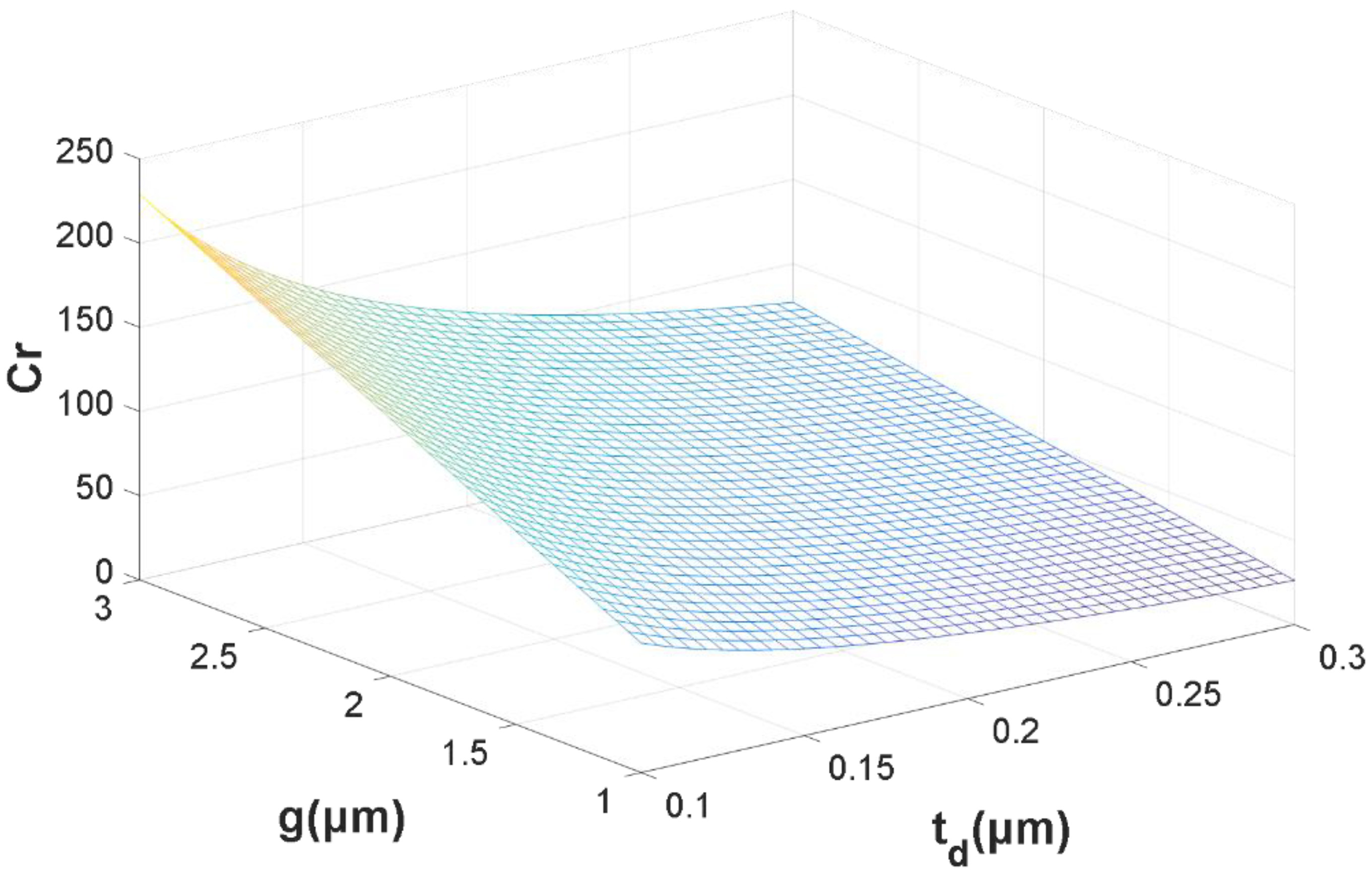
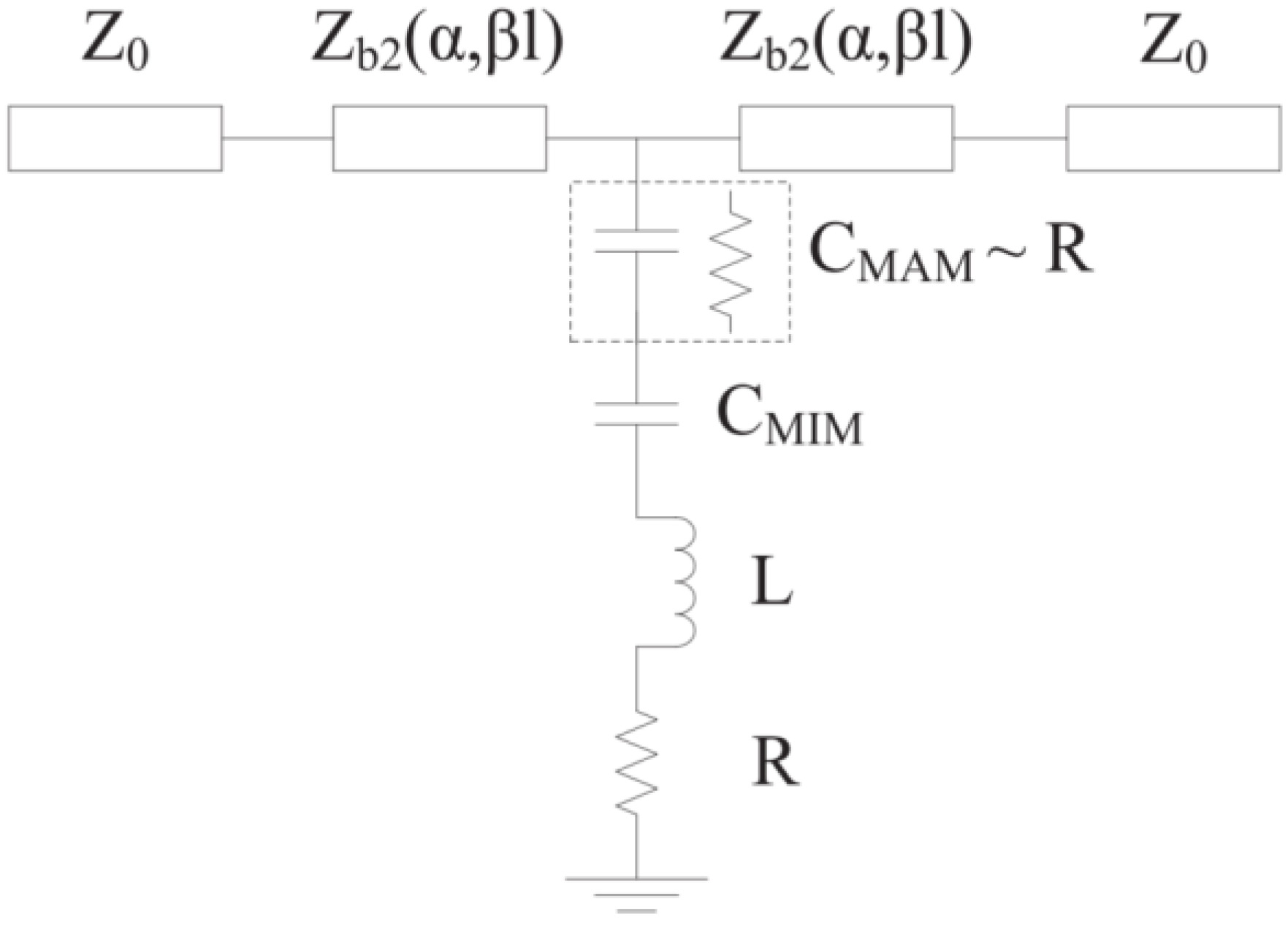
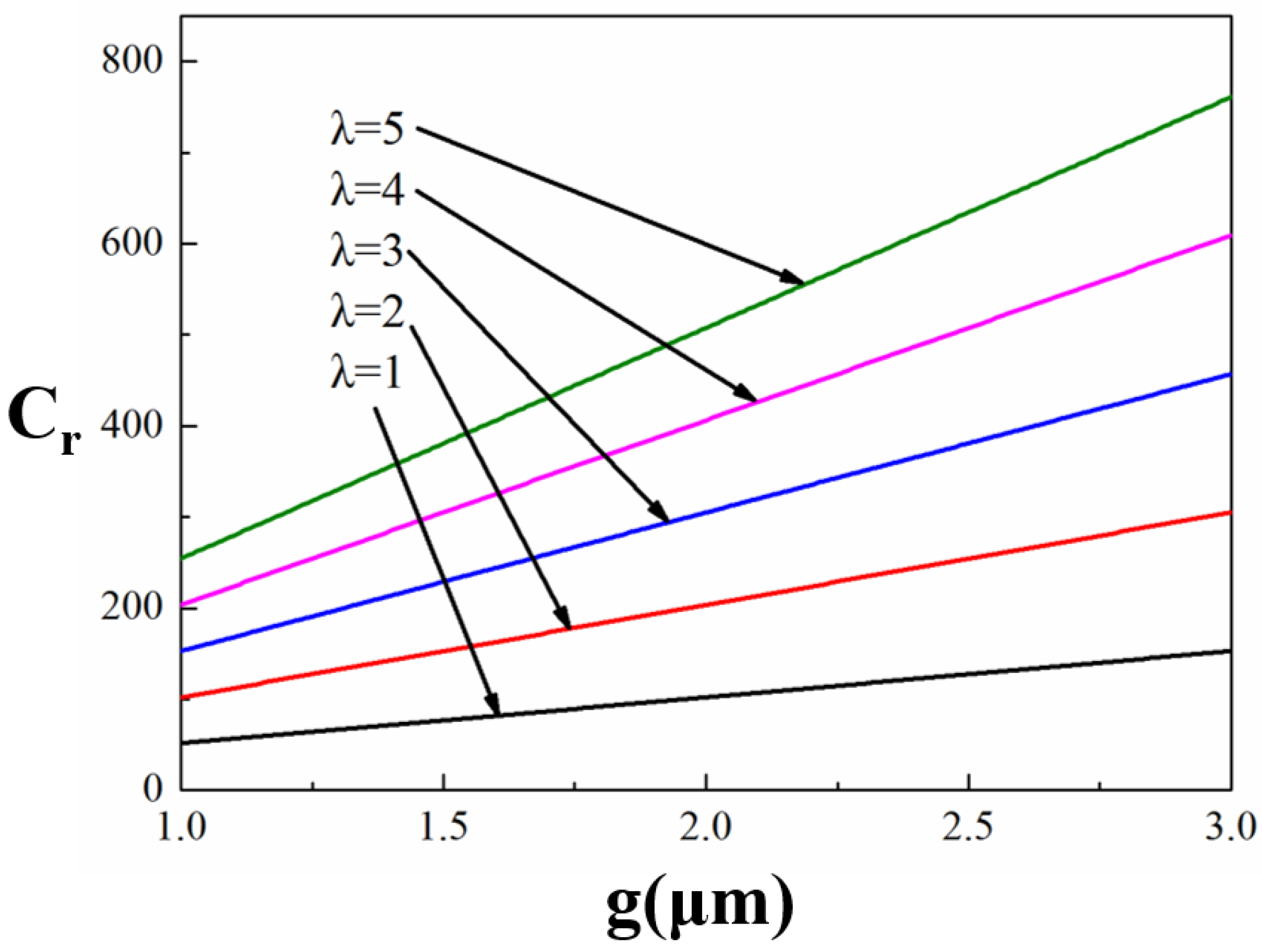
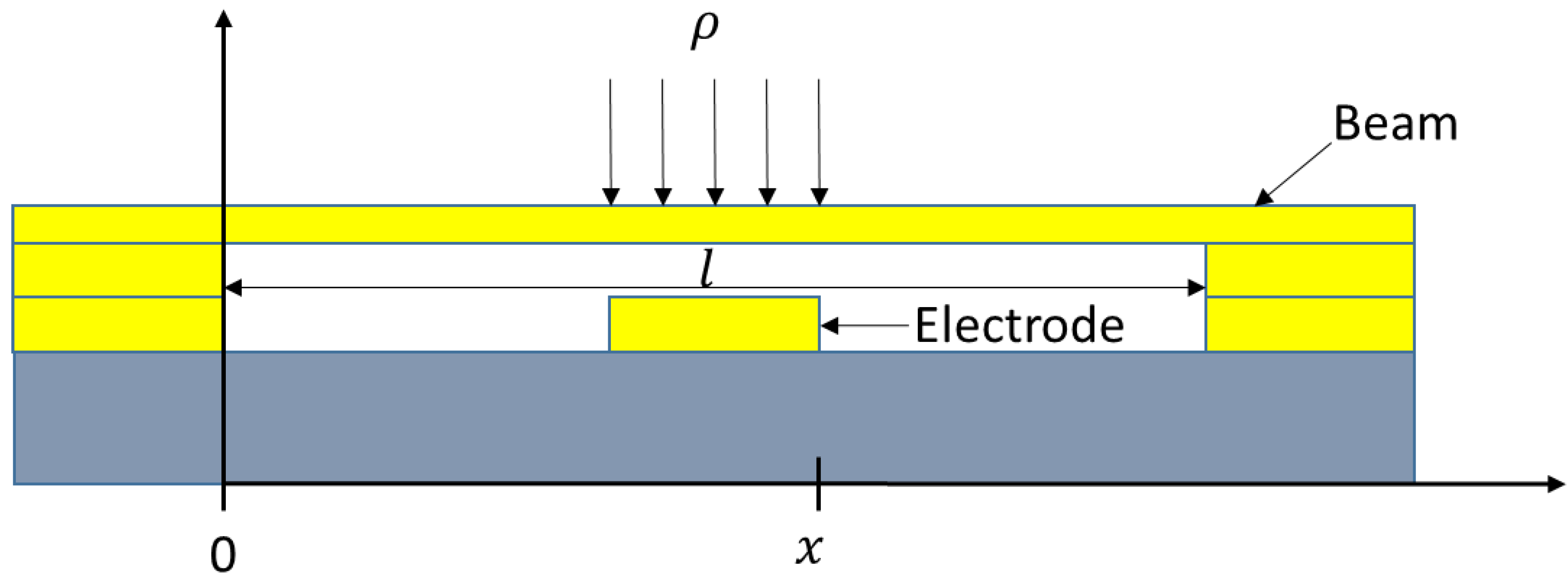
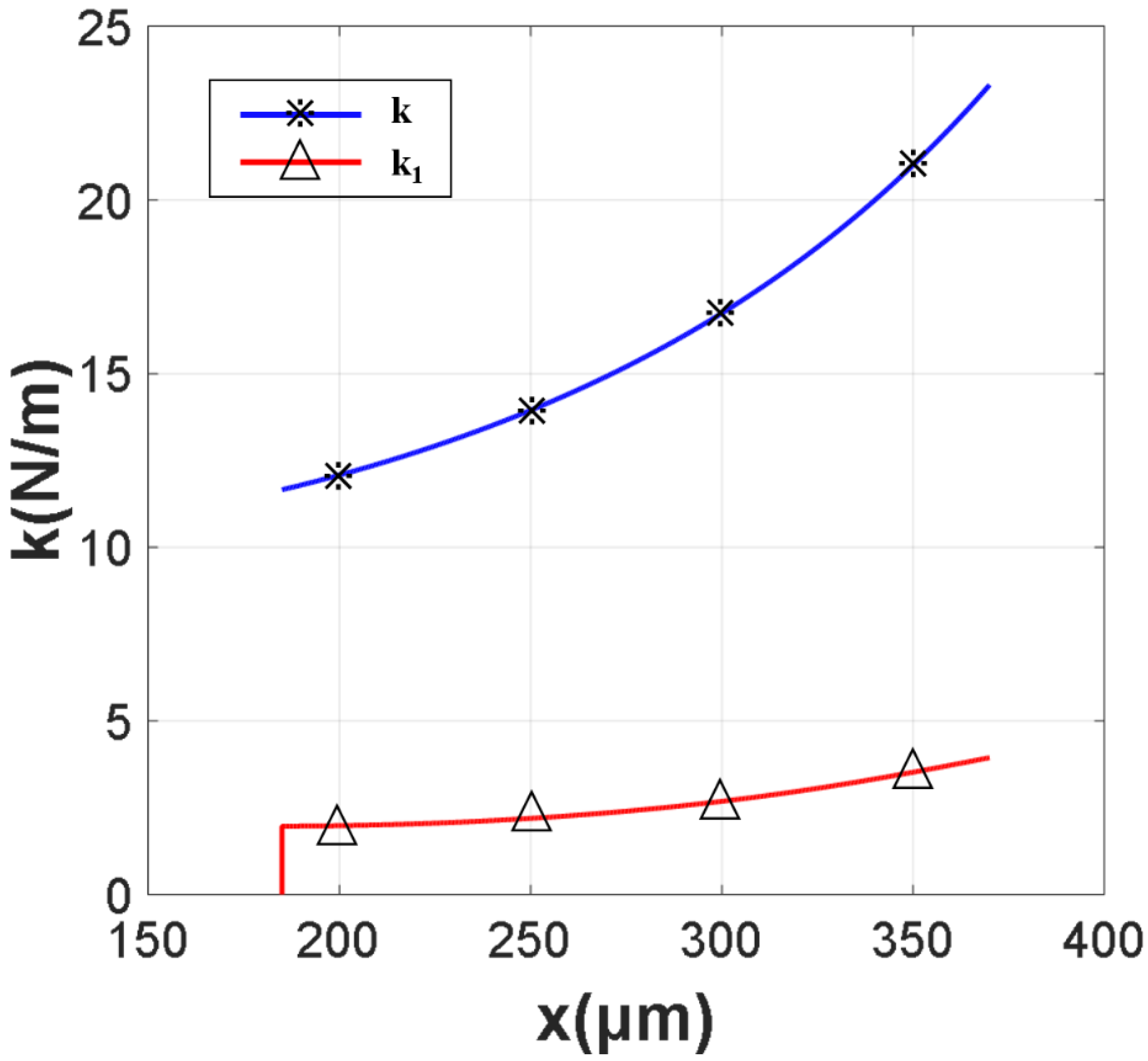
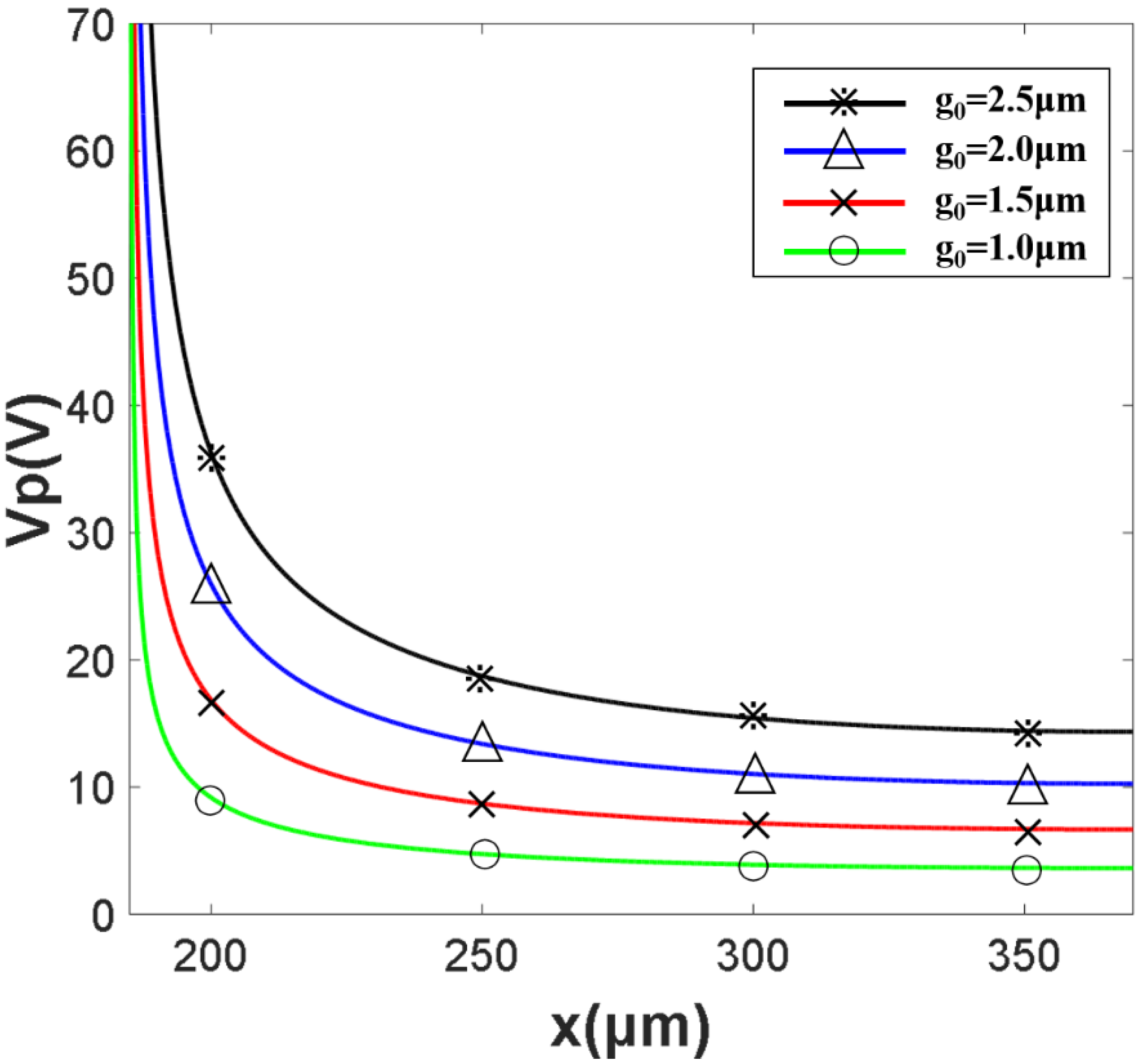


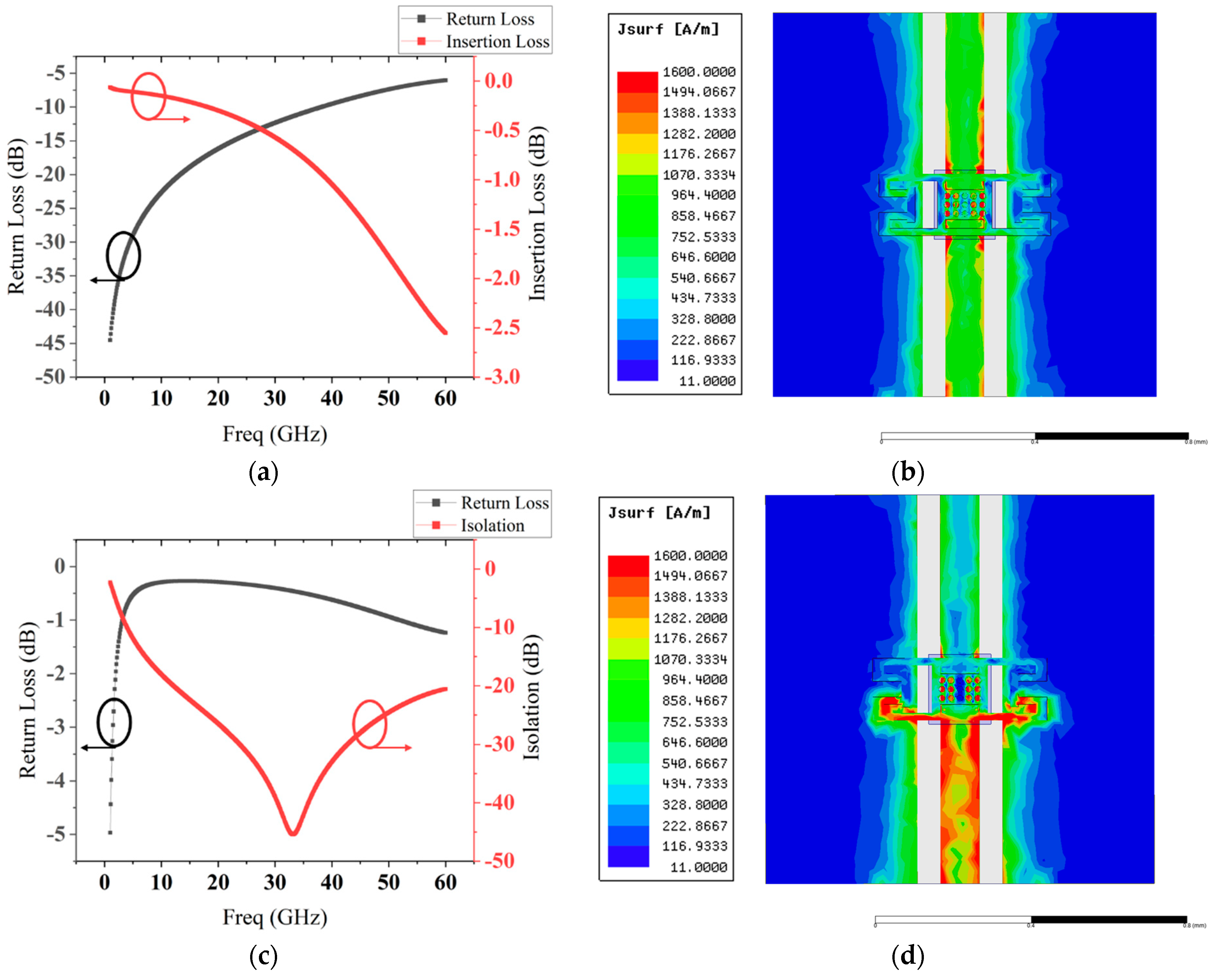
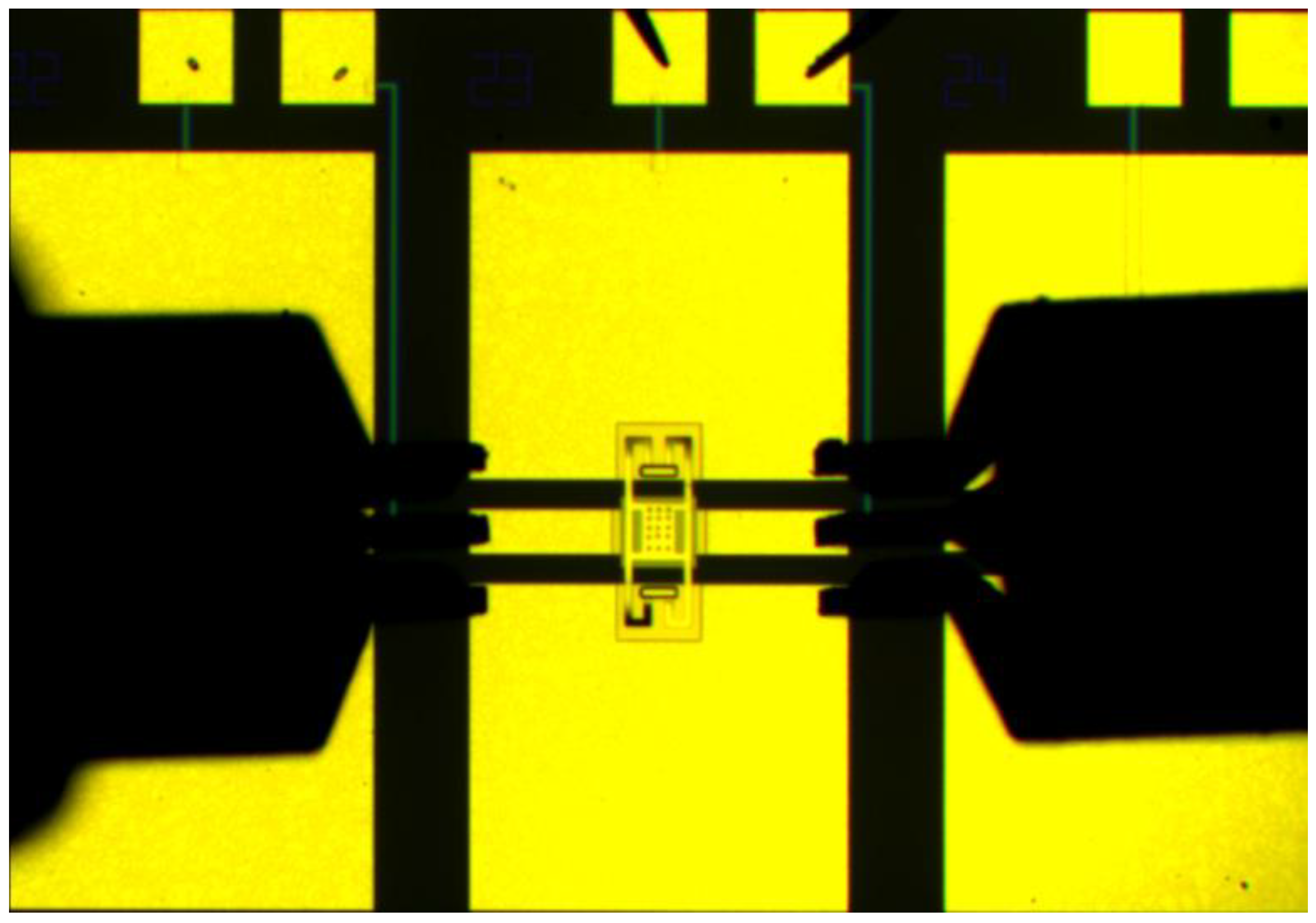
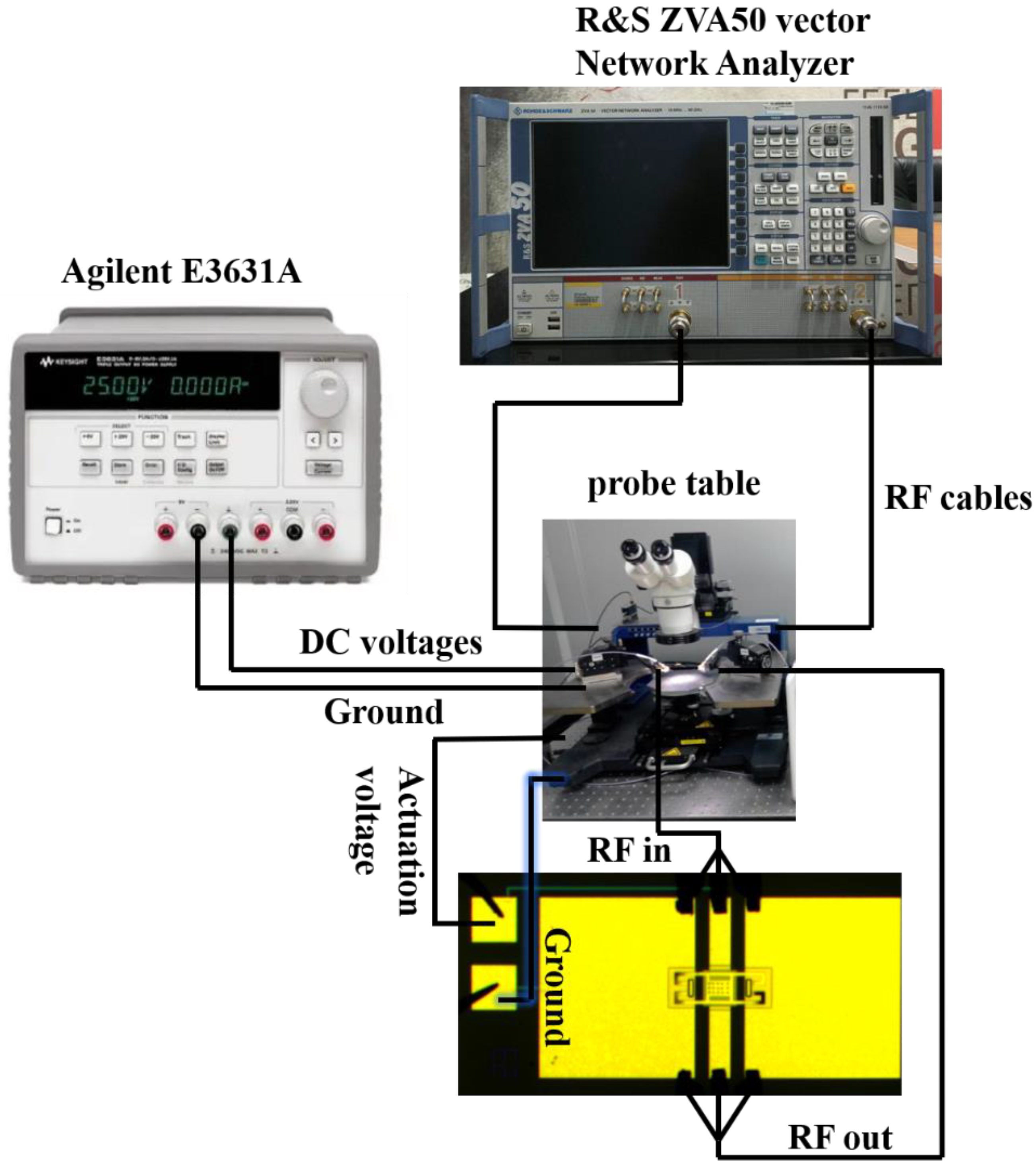
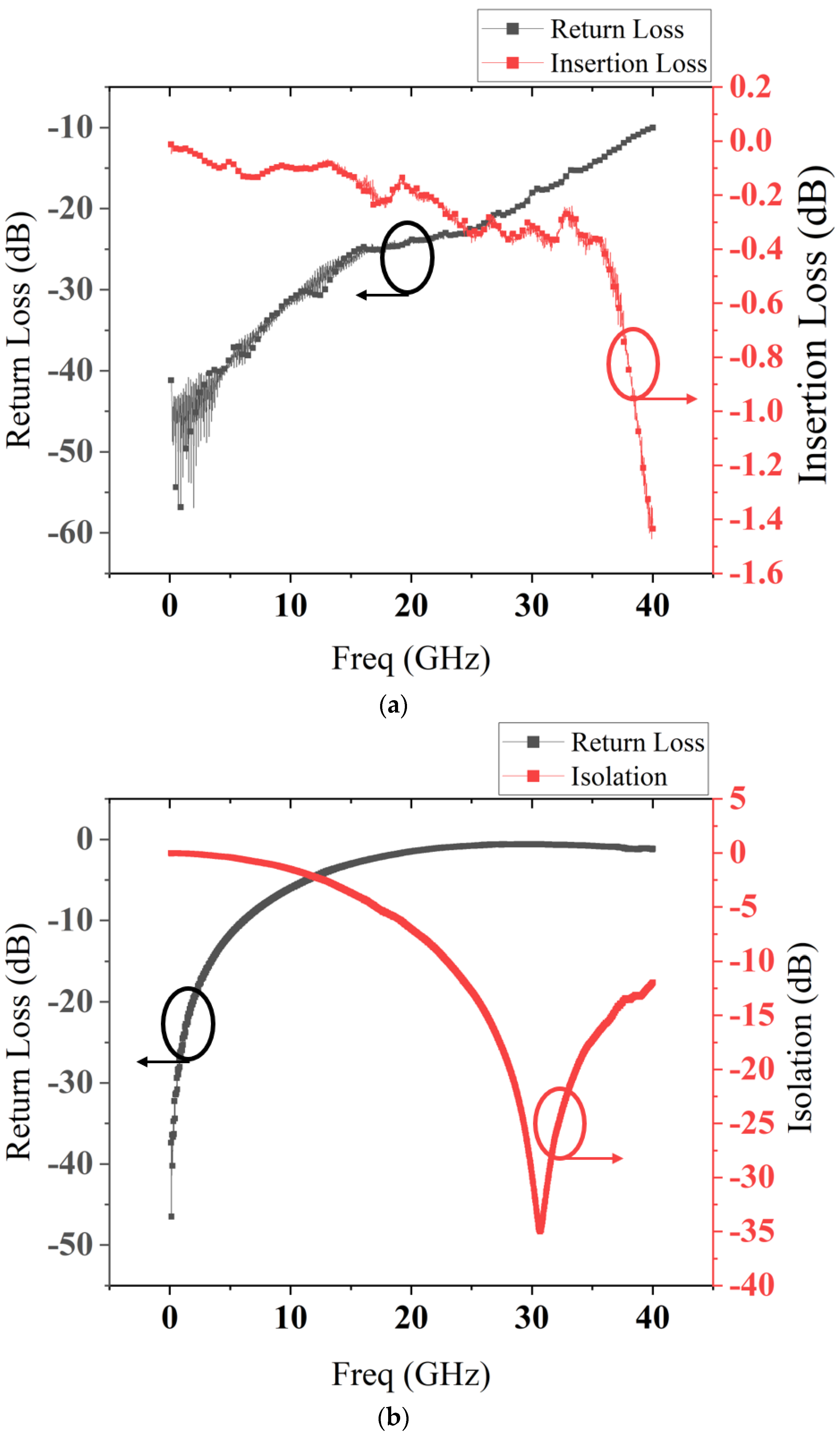

| Name of Each Part | Material |
|---|---|
| MEMS beam | Au |
| MIM floating metallic membrane | Au |
| Dielectric layer | Si3N4 |
| CPW transmission line | Au |
| Substrate | High resistance silicon |
| Author | Cup (fF) | Cdown (pF) | Cr | Insertion Loss (dB) | Isolation (dB) | Actuation Voltage (V) | Lifespan (Cycles) |
|---|---|---|---|---|---|---|---|
| Wang L F [13] | - | - | - | 0.77@6 GHz | 53@6 GHz | 15 | 107 |
| Muhua Li [14] | 9.6 | 0.83 | 87 | 0.29@35 GHz | 20.5@ 35 GHz | 18.3 | 104 |
| YQ Zhu [15] | - | 3.4 | - | <1.2@40 GHz | 60@35 GHz | 0.16 | 105 |
| Park J [16] | - | - | - | 0.29@24 GHz | 30.1@24 GHz | 25 | 109 |
| Persano A [17] | - | - | 12–16 | 0.8@25 GHz | 20@25 GHz | 25–40 | 106 |
| Yang H H [18] | 190 | 1 | 5 | <1@ DC~20 GHz | 11@20 GHz | 65 | 104 |
| MF.B. [19] | - | 1.27 | - | 0.68@40 GHz | 35.8@40 GHz | 23.6 | - |
| Li-Ya M [20] | 140 | 7.31 | 52 | 5.65@40 GHz | 24.38@40 GHz | 3.04 | - |
| Fouladi [11] | 23 | 2.1 | 91 | 0.98@20 GHz | 17.9@20 GHz | 82 | - |
| This paper | 47.1 | 11.6 | 246.3 | 0.5@32 GHz | 35@32 GHz | 16 | 108 |
Publisher’s Note: MDPI stays neutral with regard to jurisdictional claims in published maps and institutional affiliations. |
© 2022 by the authors. Licensee MDPI, Basel, Switzerland. This article is an open access article distributed under the terms and conditions of the Creative Commons Attribution (CC BY) license (https://creativecommons.org/licenses/by/4.0/).
Share and Cite
Deng, Z.; Wang, Y.; Deng, K.; Lai, C.; Zhou, J. Novel High Isolation and High Capacitance Ratio RF MEMS Switch: Design, Analysis and Performance Verification. Micromachines 2022, 13, 646. https://doi.org/10.3390/mi13050646
Deng Z, Wang Y, Deng K, Lai C, Zhou J. Novel High Isolation and High Capacitance Ratio RF MEMS Switch: Design, Analysis and Performance Verification. Micromachines. 2022; 13(5):646. https://doi.org/10.3390/mi13050646
Chicago/Turabian StyleDeng, Zhongliang, Yucheng Wang, Kun Deng, Chengqi Lai, and Jiali Zhou. 2022. "Novel High Isolation and High Capacitance Ratio RF MEMS Switch: Design, Analysis and Performance Verification" Micromachines 13, no. 5: 646. https://doi.org/10.3390/mi13050646






